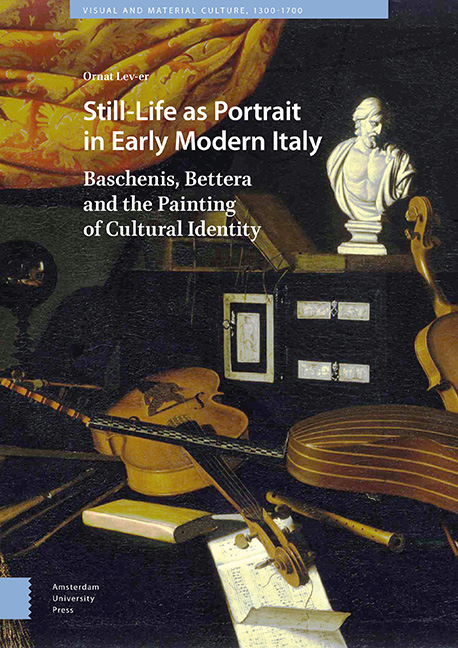 Still-Life as Portrait in Early Modern Italy
Still-Life as Portrait in Early Modern Italy 5 - A Double Act: Still-Life and Theatre
Published online by Cambridge University Press: 23 June 2021
Summary
Life is like a festival, just as some come to the festival to compete, some to ply their trade, but the best people come as spectators. So, in life the slavish men go hunting for fame or gain, the philosophers for truth.
The world of theatre and the world as theatre were inseparable parts of the culture and society in which Baschenis and Bettera worked. In this chapter, the reader is invited, much like the artists’ viewers, to cultivate a gaze that is not focused on a painting, but rather directed at the theatre, for, as if using a ‘magic paintbrush’, Baschenis and Bettera transformed the two-dimensional canvas into a theatrical space whose protagonists are objects rather than characters in a play. In the following discussion, the novelty and originality of these two genre painters will be demonstrated, artists whose compositions infused new life into the still-life paradigm. By arranging a display of objects on a stage-like table, and employing theatrical scenery and lighting, Baschenis and Bettera staged their messages and called for a dialogue with their viewers.
The word ‘theatre’ comes from the ancient Greek theaomai, meaning: to observe, see, and look. In the early modern period, the term ‘theatre’ alluded to the greatness of ancient Greece and Rome and implied a longing for this glorious past. Accordingly, humanists and scholars wrote theoretical and philosophical treatises whose titles included the Latin word for theatre, teatrum, as a metaphor for reason, critical thinking, and observation that added a tone of importance to their texts.
A Gaze at the Theatre
During the Baroque period, theatrical works centred on conflicts among characters, opposing views, and complex situations borrowed from the world of everyday life, as well as on serious, fateful themes related to moral, social, and religious dilemmas. Bettera and Baschenis challenged their viewers to search for both explicit and implicit allusions in their works and to study them in depth, thus expressing their own intellectual and emotional view concerning the ideas and conflicts identified on canvas. Both painters presented objects that were symbolic of various themes, either independently or in relation to other objects.
- Type
- Chapter
- Information
- Still-Life as Portrait in Early Modern ItalyBaschenis, Bettera and the Painting of Cultural Identity, pp. 181 - 220Publisher: Amsterdam University PressPrint publication year: 2019


